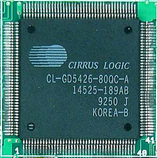Cirrus Logic CL-GD5426
The CL-GD5426 was a Super VGA chipset released in 1993. It was designed to work on the ISA or VESA Local Bus and allowed for up to 2 MB of video memory to be accessed. It was Cirrus Logic's first GUI accelerator chipset, having a 32-bit hardware BitBLT (bit block transfer) engine.
|
Released | March 1993 |
| Bus | ISA 16-bit or VESA Local Bus | |
| Chipset | Cirrus Logic CL-GD5426 | |
| Standards | MDA, Hercules, CGA, EGA, VGA | |
| Memory | 256 KB, 512 KB, 1 MB or 2 MB FPM DRAM (70, 80 or 100ns) | |
| RAMDAC | (Internal) | |
| Part # | - | |
| FCC IDs | ||
| Cards | ||
| See Also | CL-GD5422/4/5, CL-GD5428 |
The core clock on the 5426 ran at the same speed as the 5422/5424 running at 80 MHz with memory clocking in at 50 MHz. The maximum resolution supported by the chipset was 1280 x 1024 (interlaced) in 256 colours. If a higher colour depth was needed, you could run a 2 MB card in 1024 x 768 at 64,000 colours or 640 x 480 in 16.7-million True Color. For the fastest refresh rate of 72 Hz non-interlaced, the chipset could be run in 1024 x 768 or 800 x 600 resolution.
Memory-wise, the chipset was backward-compatible with earlier 542x chipsets, though almost every card that used the CL-GD5426 came with either 1 MB or 2 MB of memory. These were oriented in two banks of 1 MB Fast Page Mode (FPM) DRAM. One exception to this was BOCA Research's SuperX VGA which came in three variants - the cheapest of these was a 512 KB version that was not expandable.
The chipset was extremely popular, and can be found on the following SVGA cards:
- Aquarius Systems Inc (FCC ID: GPLAPC-5426)
- ASL Lightning2 / Alpha Systems Lab (FCC ID: JSQASLWACJJMP)
- ASUS GMIO-470
- Boca Research SuperX Accelerator VGA
- Cardinal Technologies VideoSpectrum XL
- Cirrus Logic (FCC ID: J6N4LVLDM7)
- Diamond SpeedSTAR Pro ISA (FCC ID: FTUISA5426A)
- DTK PTI-240A VESA VGA (FCC ID: F825K4PTI240)
- Edge Technology D24 BitBlaster Plus (Edge Technology became Micron Computer, Inc. in 1993)
- FIC (First International Computer) FCC ID EUNVGA-542V
- Genoa Systems Windows VGA 24 Model 8500/VL
- Hightech Information System (HK) Ltd (FCC ID: KBIA3U5428)
- Magitronic (FCC ID: JDF-VGA-VL5426)
- Octek AVGA-26 (Part no. EP20073R11)
- Octek(?) AVGA-3VL (Part no. MVGA-AVGA3VL)
- Octek VL-COMBO (Part no. EP40084R32)
- Pine PT-2036 (FCC ID: H52-PT-2036)
- Pine PTI-5426-VL (FCC ID: PTI 5426VL)
- RT-3501-1 (FCC ID: I4L3405)
- RL-3503-2
- STB Systems Horizon VGA
- Whole In One
Here is a summary of the Cirrus Logic CL-GD542x range so you can compare each chipset's differences from one another:
| 5420 | 5421 | 5422 | 5424 | 5425 | 5426 | 5428 | 5429 | |
|---|---|---|---|---|---|---|---|---|
| Bus | ISA | ISA | ISA | VLB | VLB | VLB | VLB | VLB |
| GUI Acceleration | - | - | - | - | - | BitBLT | Enhanced BitBLT | MM I/O |
| Max. Video Memory | 1 MB | 1 MB | 1 MB | 1 MB | 1 MB | 2 MB | 2 MB | 2 MB |
| Memory Bus Width | 16-bit | 16-bit | 32-bit | 32-bit | 32-bit | 32-bit | 32-bit | 32-bit |
| Host Interface Width | 16-bit | 16-bit | 16-bit | 16-bit | 16-bit | 16-bit | 16-bit | 16-bit |
| Core Clock Frequency | 75 MHz | 75 MHz | 80 MHz | 80 MHz | 80 MHz | 80 MHz | 80 MHz | 86 MHz |
| Memory Clock Frequency | 50 MHz | 50 MHz | 50 MHz | 50 MHz | 60 MHz | 50 MHz | 50 MHz | 60 MHz |
| Max. Resolution at 256 Colours | 1024 x 768 (NI) | 1024 x 768 (NI) | 1024 x 768 (NI) | 1024 x 768 (NI) | 1024 x 768 (NI) | 1280 x 1024 | 1280 x 1024 | 1280 x 1024 |
Revisions
The chipset itself came in these revisions: A.
Competition
In direct competition with the CL-GD5426 chipset were the S3 86C801 (cards including the Orchid Fahrenheit VA, Mirage Storm 1280/256, VideoSeven Win.PRO and Actix GraphicsEngine 32 Plus) and ATi Mach32 (cards including the ATI Graphics Ultra Plus and ATI Graphics Ultra Pro). There were much higher-priced cards available that were typically purchased for professional use, such as CAD applications. These could get you up to 1600 x 1200 resolution (in 16 colours). There were also chipsets coming out that supported up to 4 MB of VRAM such as those based on S3's 86C928 chipset. Some mid-range options also existed, such as the Hercules Graphite card which used an IIT AGX-014 accelerator coprocessor.
PC Magazine's GUI accelerator card round-up in April 1993 determined that cards based on the CL-GD5426 were best-performing under real DOS, as their Windows performance wasn't great compared to the S3 86C801.
In the Media
The GD5426 doubles the Graphics Winmark performance of its non-accelerated sibling at some resolutions and color depth, but the problem is that the GD5426 still lags behind when measured against Windows performance of much of the accelerator competition.
The GD5426 boards we tested managed only 4.04 to 4.14 megapixels per second in 16-color Super VGA and 4.41 to 4.60 in 16-color 1,024-by-768 mode tests, for example, while [S3] 86C801- and 86C928-based products racked up average scores of 10 megapixels per second in these modes. (Even the 86C924 chip outdid the GD5426: the boards using that chip scored around 7 megapixels per second).
At 256 colors in Super VGA and 1,024-by-768 resolutions, the GD5426-based cards scored close to or a little better than 8 megapixels per second, but those scores still did not come close to those achieved by most of the 86C801-based or 86C928-based competition (which scored around 12 to 14 megapixels per second).
All the GD5426 boards we saw used a 16-bit ISA hot bus interface. According to Cirrus Logic, the chip itself delivers 32-bit access to display memory and also has a 32-bit internal data path for Extended Industry Standard Architecture (EISA) or local-bus solutions. Part of the reason GD5426-based boards can't keep up is that the chip accelerates only BitBlts, image transfers and raster operations. And while the company says that the chip provides for font caching, none of the boards we tested for this review supported that feature." PC Magazine, April 1993
Setting it Up
There is no known setup configuration for cards that have a CL-GD5426 chipset.
Downloads
Operation Manual Get in touch if you can provide this missing item! |
CL-GD5426 Drivers & Utilities Includes both DOS utilities (CLMODE) and drivers for specific applications, Windows 3.x display drivers, and OS/2 2.x display drivers for 16- and 256-colour modes.. |
CL-GD5426/5428 Windows 3.1 Drivers For all cards with CL-GD5426 or CL-GD5428 |
CL-GD542x Databook Provides technical information on the entire range of CL-GD542x graphics chipsets. |
Diamond SpeedStar Pro BIOS The 32 KB VGA ROM BIOS dump from a Diamond SpeedStar Pro VLB card. |
More Pictures
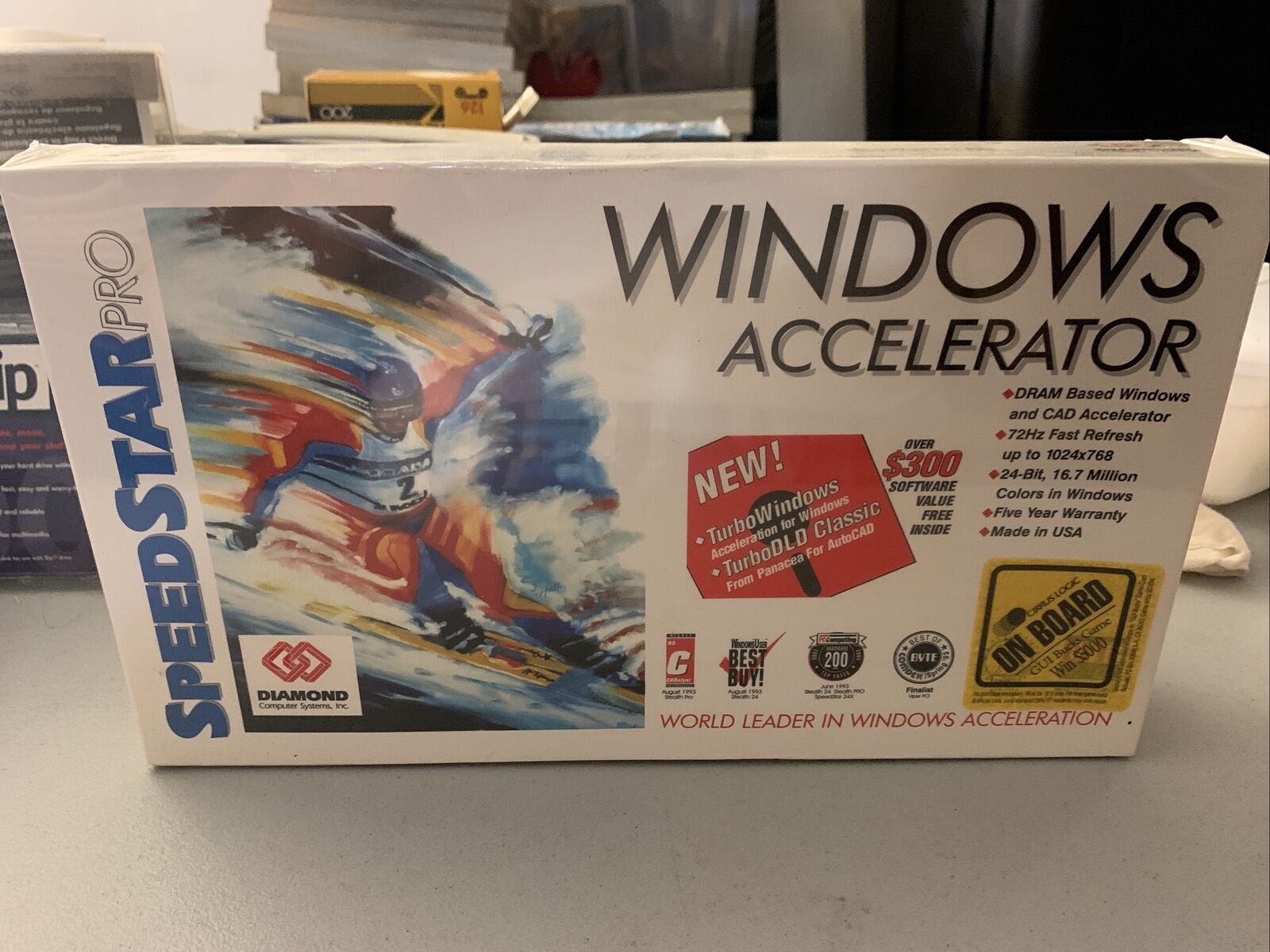
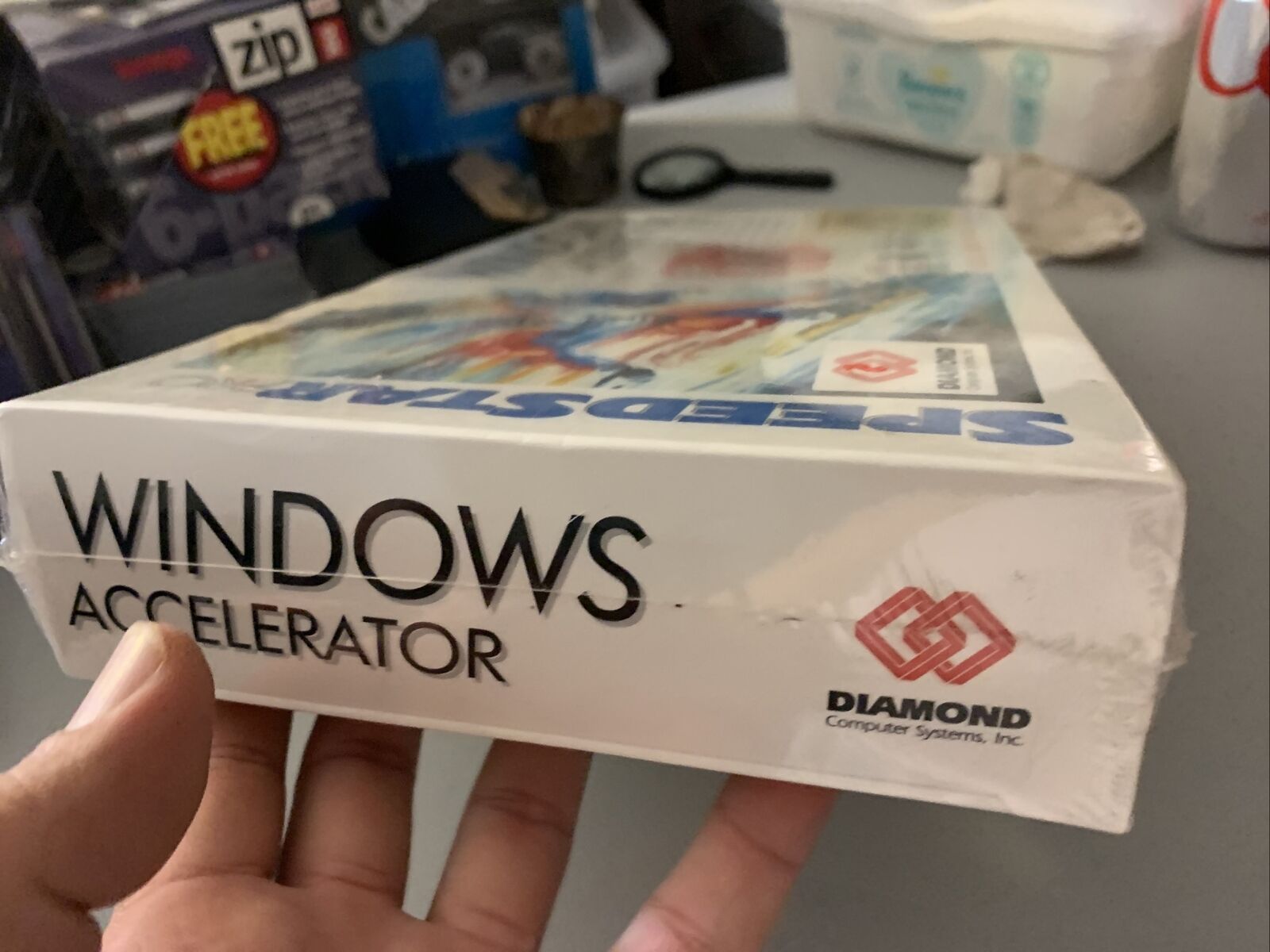
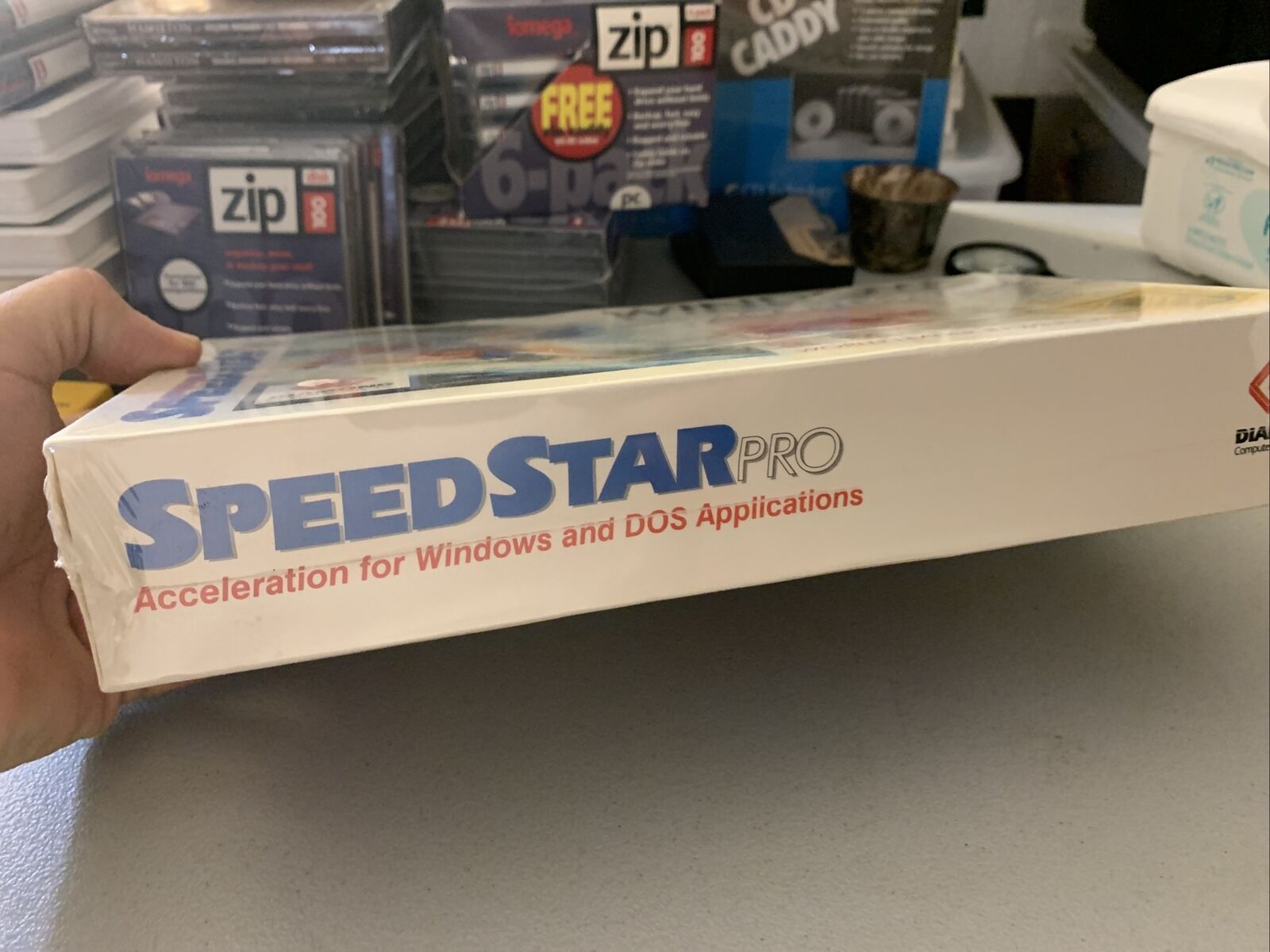



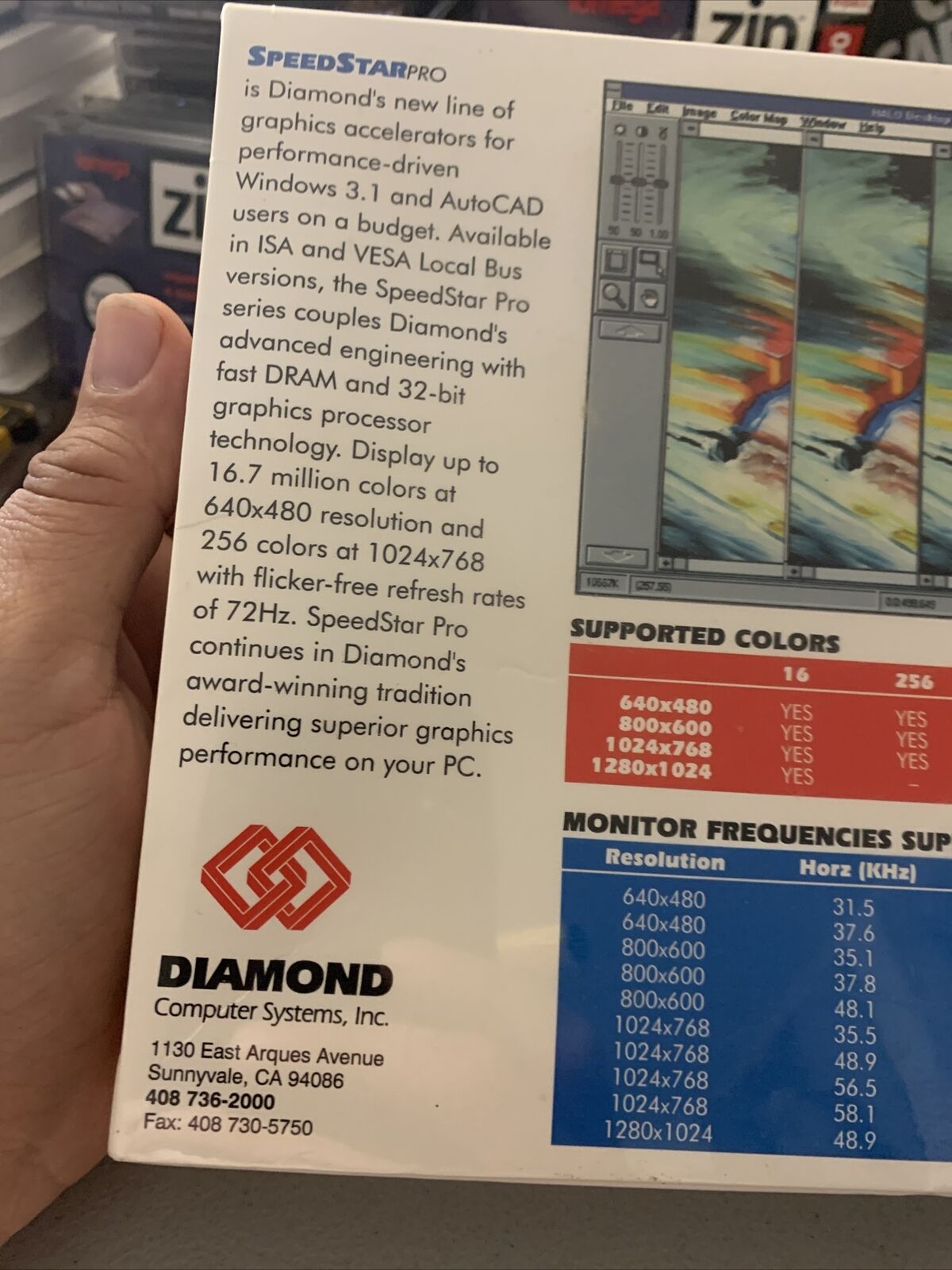
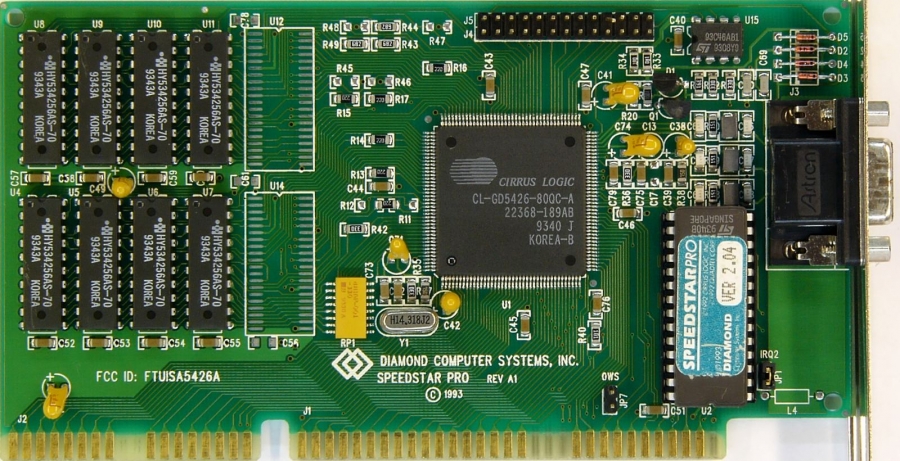
A Diamond SpeedSTAR Pro card
.png)

Genoa Systems WindowsVGA 24 in both ISA and VLB bus form
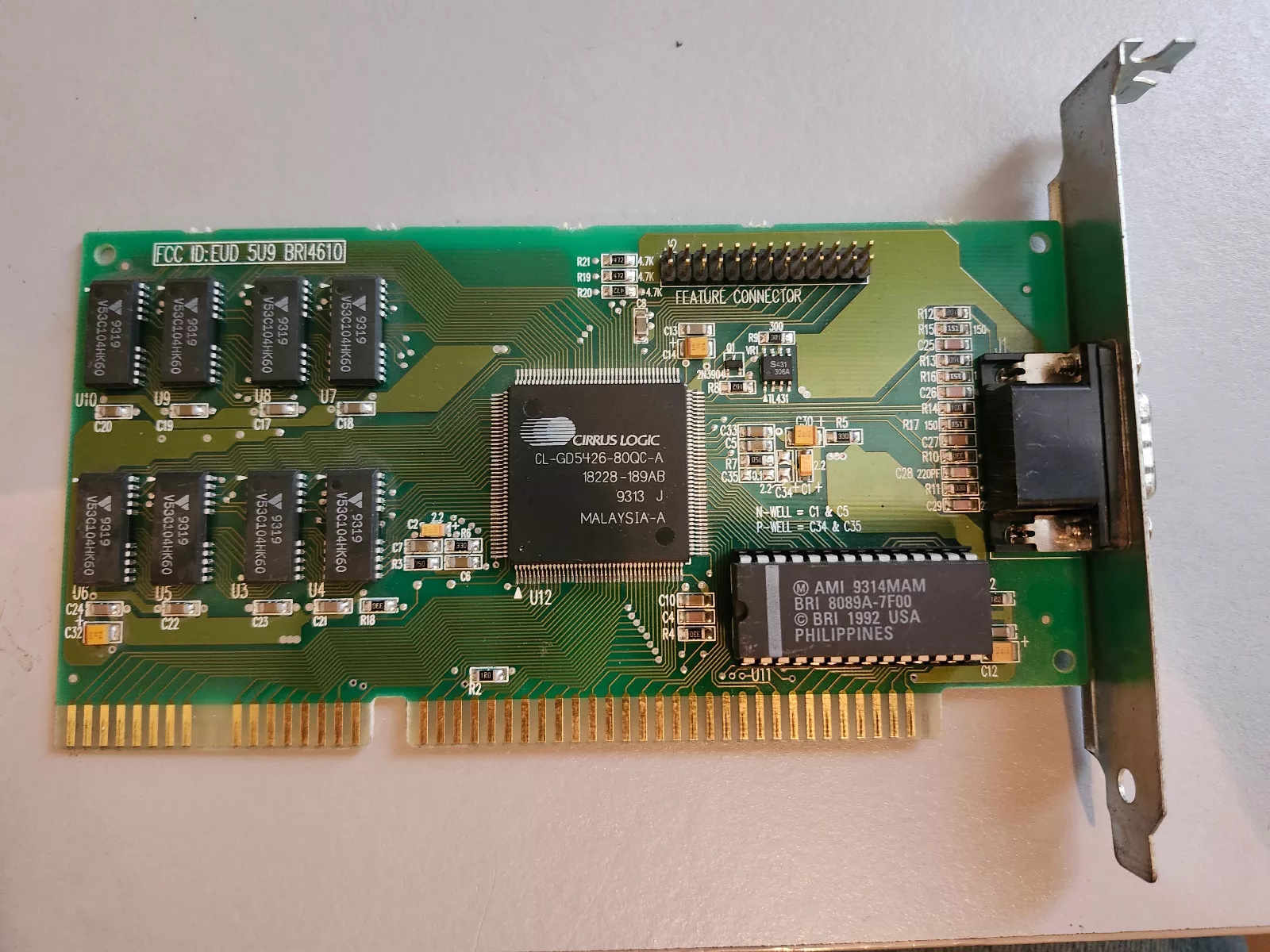
BOCA Research SuperX VGA
